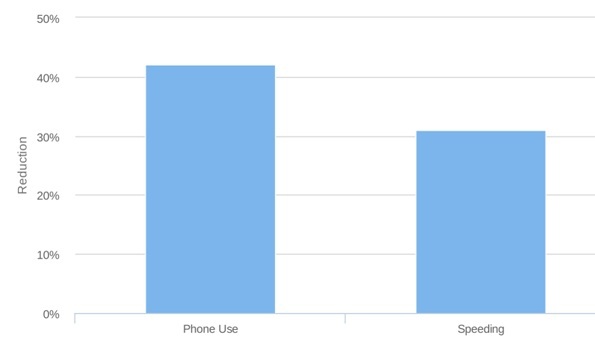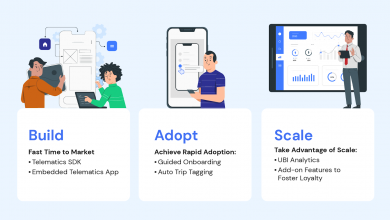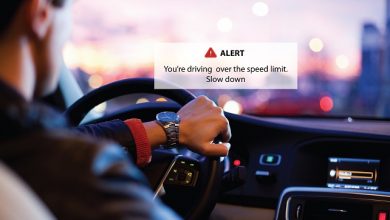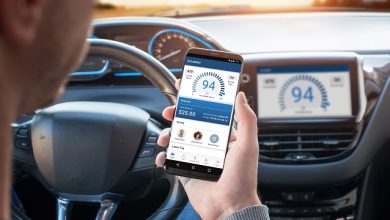San Francisco start-up on smartphone-based telematics models
Can phones make us better drivers?
The World Health Organization estimates that there are 1.24 million road traffic deaths every year. Put another way, someone’s dying in a traffic accident every 25 seconds. And with a growing percentage of those accidents caused by driver distraction due to cell phone use, it’s almost counter-intuitive to believe that those same smartphones can actually make us better drivers. But they can.
In the years before smartphones were ubiquitous in the pockets or cup holders of every driver on the road — data around driver behavior had typically been collected by using built-in automotive hardware devices such as a “black box” or “OBD,” otherwise known as an on-board diagnostic system. At first glance, collecting data from OBDs may seem like a great way for both insurers and fleet managers to learn more about driver behavior. However, there is a good reason why none of these hardware-based solutions have taken the market even though there are dozens of companies still trying to do so. OBDs have some major limitations when it comes to driving analytics.
Firstly, if a family shares a car, there is no way to determine if it’s the teenage son or the mother behind the wheel. The result is muddled risk assessment and pricing inefficiency. Secondly, while OBDs are better at identifying mechanical problems, about 90% of car accidents are caused by driver error—and OBD is no better than a smartphone in determining that (as matter of fact, OBD is worse on key aspects — such as speeding, where tire pressure can change the OBD speed reading by up to 20%). Most importantly, however, OBD devices have seen little consumer appeal and are either too expensive or perceived as a “spyware” by consumers who are not eager to expose anything to their insurance carriers.
With the proliferation of smartphones in the last few years, gathering specific, contextual telematics data in mass scale has become possible for the very first time. However, it is far from easy. Using the accelerometers, gyroscopes, and other smartphone sensors to this end can be extremely difficult (there are thousands of phone models) and requires deep expertise in signal processing and machine learning. However, with the right algorithms, it is now possible to gather information on things such as cell phone use, speed, swerves, hard stops, fast accelerations, as well as weather, trip duration, time of day, and more – all without relying on built-in hardware. The right tech can now accumulate massive amounts of data—and insurers, fleets and city planners can make use of those different data points to help reshape transportation.
But data collection is just the first of three keys needed to meaningfully improve driving behavior. There are two other important areas that are crucial to turning data into actionable driving insights. Data analysis is the second essential key, and one that traditional insurers and telematics incumbents just don’t seem to do very well in. This is probably because it requires the kind of hardcore machine learning and big data capabilities that were built in Silicon Valley to launch and scale cutting edge technologies that most insurance incumbents simply aren’t familiar with.
The third key is finding the right path to turn those insights into actionable advice. It’s those highly detailed tips delivered to the right driver or right fleet manager at the right time that can have the biggest impact.

Jonathan Matus, Zendrive’s CEO, used this analogy, “Let’s say you got a B in English class. You’ve learned that you have room for improvement—but it’s actually the detailed feedback on your essays, the little comments about paragraph structure that help you understand exactly what you need to do to improve. Without that, all you’d really know is that you’re just a B student. “
“At Zendrive, we do all three and focus on mobile as the key for rapid data collection,” said Jonathan. Zendrive’s analytics platform crunches driver data and provides a powerful visualization dashboard that gives fleet managers detailed insight into their drivers’ on-road behaviors, as well as advice on how to minimize risk. Fleet managers can then communicate with drivers in a constructive manner, and help them change in a positive way. “Our platform was able to immediately reduce risky behaviors such as speeding and phone use by over one third via positive driver reinforcement and communication,” said Matus.
On the fleet side, with obvious telematics applications, the transition from hardware to smartphone-based telematics is inevitable wherever car-level data is secondary in importance to safety and driver monitoring (for instance, with the explosively fast growing on-demand economy).
On the insurance side, with Usage Based Insurance (UBI) models, the importance of mobile grows as smartphones become more ubiquitous and at the same time are increasingly shown to be a primary cause of mishaps on the road.
But smartphone-based solutions could prove important not just for insurers but also to consumers for one other reason, namely — the possibility of always-on automatic accident detection.

Imagine a world where smartphones could detect an accident automatically and accurately. If an accident should occur, smartphones could trigger a variety of responses — from requesting emergency medical assistance to sending alerts to friends and family with location details. The benefit of the mobile platform over hardware-based solutions (aside from the order of magnitude difference in pricing) is that the smartphone is with us pretty much at all times. If an accident occurs while the user is a passenger in a taxi or riding in the backseat of a friend’s car – the responses will still be automatically activated.
From the insurance carrier perspective as well, accident detection is useful for THREE reasons. Firstly, it is crucial in determining if and when an actual accident occurred, rapidly responding to it and minimizing claim costs. Secondly, it provides insurers with privileged access to sensor data from smartphones of what happened right before the accident and can significantly reduce LAE (Loss Adjustment Expenses) and fraud. Thirdly, this life-saving capability is a desirable consumer feature. “For the first time ever,” said Matus, “consumers have a good reason to share real driving data with their insurers. This eliminates a huge barrier to adoption, the slow pace of which has hindered the growth of UBI and other advanced insurance models for a long time.”
This April, Zendrive in partnership with BMW’s vehicle crash-labs in Germany, launched automatic accident detection technology that can be licensed and embedded into any mobile app. “Our vision is to make any and every phone out there an automatic accident detection tool and help reduce road fatalities,” Matus said.
Forrester Research predicts that there will be 3.5 billion smartphone users worldwide within the next five years, so while the trend toward smartphone-based telematics is an obvious one—it’s only just starting to surface. With a smartphone in everyone’s pocket, they are naturally positioned to give drivers a variety of real-time feedback in ways that on-board diagnostic systems will never be able to match. Consumers, corporations, and insurers all stand to benefit from the features and insights that companies like Zendrive are already bringing to market. Over time, the more data that gets collected, the better we as an industry can become at predicting driver behavior—and hopefully, make the roads a safer place for everyone.




